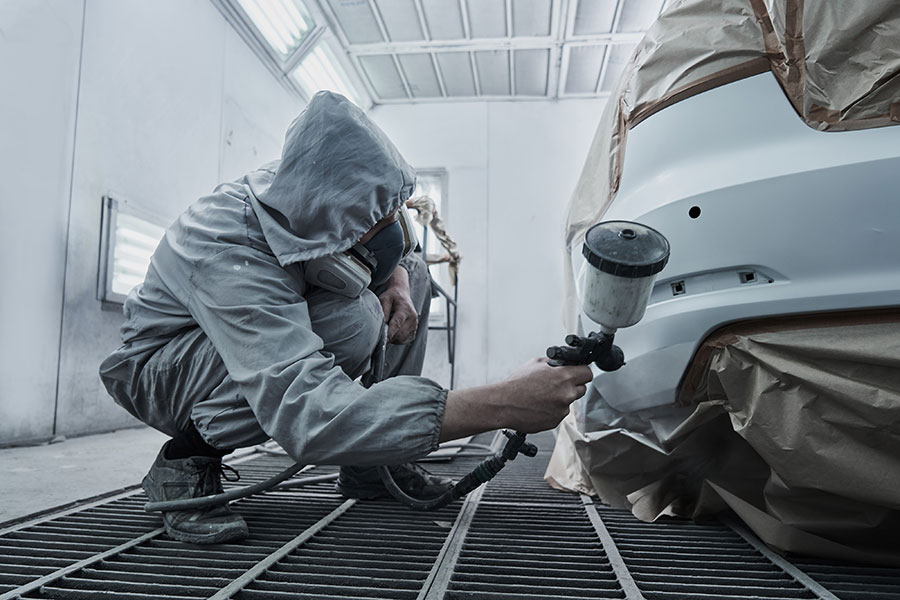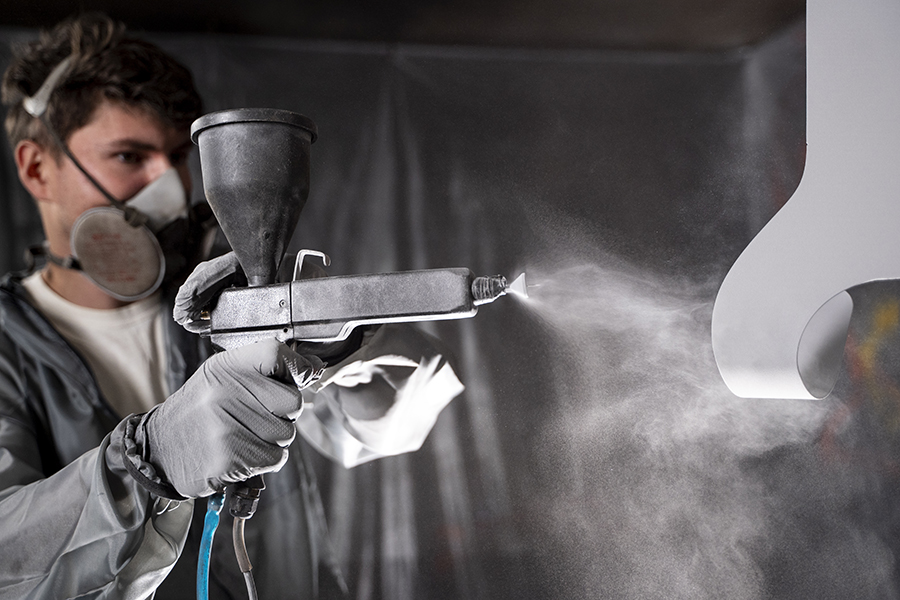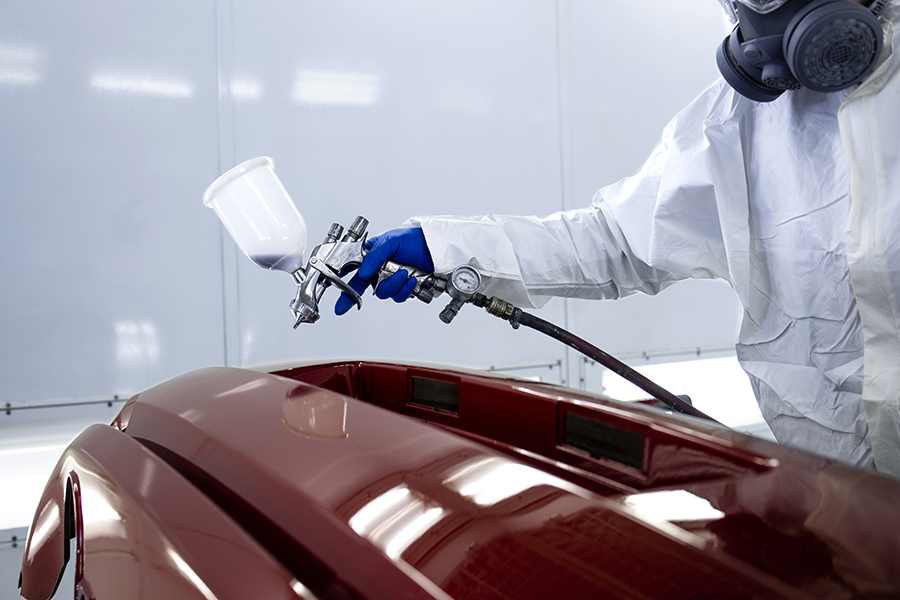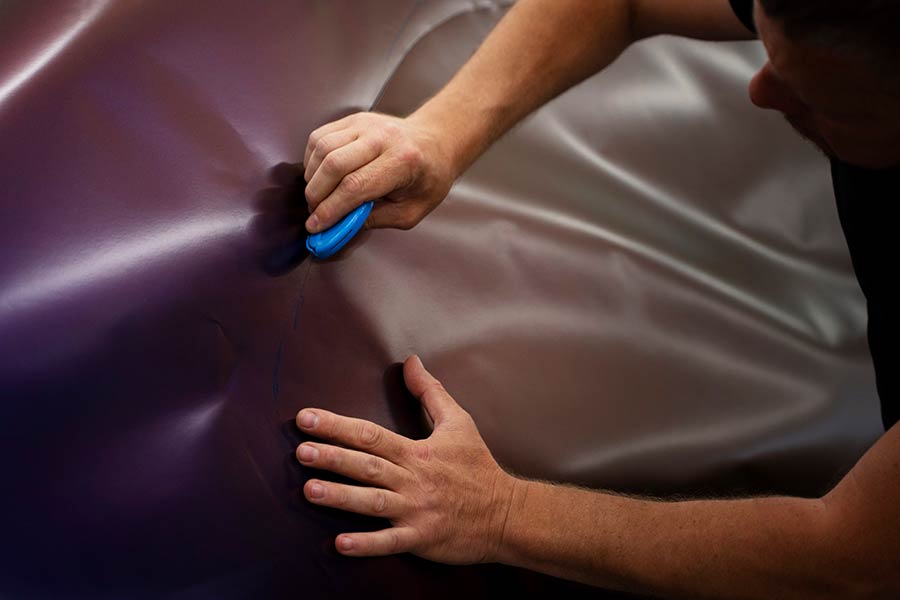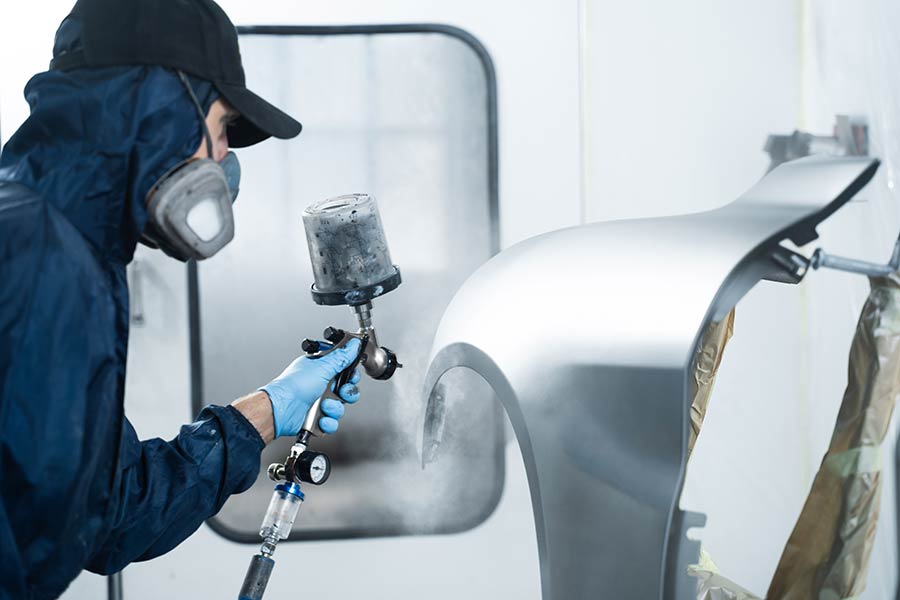Ever wondered how cars keep their color so fresh, even after a repair? It's all thanks to the science and art of auto body paint matching. This technique has evolved from simple eye-balling in the early days of automobiles to today's sophisticated color-matching technology. Back in the day, matching a car's paint color was more guesswork than precision, often leading to mismatched hues that stood out rather than blended in. Now, with advancements in technology and a deeper understanding of color theory, achieving that perfect match is no longer left to chance, ensuring your ride looks seamless and sharp.
Key Takeaways
-
Getting the right match for your auto body paint is key to a seamless repair. This ensures your car looks as good as new.
-
Use the latest tools and technologies, like spectrophotometers, for precise paint matching. These tools help in finding the exact color blend.
-
When choosing a service provider, look for those with experience and positive reviews. They are more likely to deliver high-quality paint matching.
-
If you're trying DIY paint matching, follow tips like testing paint in small areas first. This can save you time and ensure a better match before a full application.
-
After getting your car painted, follow proper post-restoration care tips. This helps maintain the new paint job and keeps your car looking great.
-
Be aware of common challenges in paint matching, such as fading on older cars. Knowing these can help set realistic expectations and solutions.
Importance of Paint Matching
Restoring Original Appearance
Getting the right paint match is key to keeping a car looking like new. Specialists use advanced technology to find the perfect match. They consider the car's make, model, and year. This ensures the color blends seamlessly with the original paint.
Restoring a car's appearance isn't just about looks. It also protects the vehicle's body from rust and damage. A perfect paint match maintains both the car's aesthetics and integrity.
Enhancing Vehicle Value
A professional paint job can significantly boost a car's resale value. Buyers look for cars that appear well-maintained. Seamless paint matching makes a big difference here.
Using high-quality paint matters too. It ensures the finish lasts longer, adding to the car's appeal. This attention to detail can increase a vehicle’s market value.
Customization Benefits
Custom paint jobs let owners express their style. Color matching is crucial in these projects for a polished look. It allows for creativity while ensuring the final product looks cohesive.
Custom paint makes a vehicle unique. It turns heads and stands out on the road. This personal touch can also reflect an owner’s personality or brand.
Precision Paint Matching Process
Color Code Identification
Locating Paint Code
Finding the vehicle's paint code is step one in matching its color. Most cars have the code on a sticker inside the door jamb, under the hood, or in the trunk. This code is crucial for an exact match. If the code is unreadable or missing, check the vehicle manual or contact a dealership. They can help.
Online Resources
Several websites and tools aid in finding matching paint colors. For instance, automotivetouchup.com and paintscratch.com are popular. Car forums and communities often share advice on auto body painting. Apps like Color Muse can also identify paint codes and suggest matching colors.
Advanced Matching Techniques
Spectrophotometer Use
A spectrophotometer measures paint colors accurately. It works by analyzing light reflected off the car's surface. This technology ensures a precise match. Professional auto body shops benefit greatly from using this device.
Software Solutions
tware helps with color matching and creating formulas. When used with spectrophotometers, accuracy improves significantly. Popular options include PPG’s PaintManager® software and Axalta’s ColorNet®. These tools are essential for professionals.
Tools and Technologies
Professional Equipment
Professionals use spectrophotometers and colorimeters for paint matching. These tools analyze the paint's color and finish. High-quality equipment ensures the best matches. Different tools vary in effectiveness, but spectrophotometers are top-notch for accuracy.
Investing in these devices pays off by delivering precise results. This ties back to the precision paint matching process mentioned earlier.
DIY Options
For DIY enthusiasts, mixing paints requires careful attention. Use a well-lit area to compare colors accurately. However, matching paint without professional tools has pitfalls. Colors may look different under various lighting conditions.
To avoid mistakes, research extensively on DIY techniques. Online forums and tutorials can be gold mines of information.
Online Paint Buying
When buying auto paint online, use your vehicle’s paint code. This ensures you get the correct shade. Look for reputable retailers like AutomotiveTouchup or PaintScratch.
Yet, be cautious of color discrepancies due to screen settings. Seeing paint in person differs from viewing online images.
Selecting a Service Provider
Evaluating Expertise
To assess the expertise of an auto body painter, start by reading reviews. They offer real-life insights into their skills. Check for certifications too. They show professional training in paint matching. Look at their portfolio to see past work.
Ask them about their experience with different paint types and car models. This will help you gauge their ability to match your car's paint perfectly.
Understanding Costs
Touch-Up vs Full Repaint
A touch-up works well for small scratches. It costs less and takes less time. A full repaint is needed when damage is extensive or you want a new look. It's more expensive and takes longer but can boost your car's value and appearance.
Think about how each option impacts your vehicle in the long run.
Price Factors
The cost depends on the repair size, paint type, and labor hours. High-quality paints cost more but last longer. Labor costs vary based on the shop's location and expertise level.
Plan your budget by considering these factors.
Free Estimate Importance
Getting a free estimate is crucial before deciding on a paint job. Estimates can differ between shops due to labor rates or material costs. Ensure the estimate includes all job aspects to avoid surprises later.
DIY Paint Matching Tips
Using Touch-Up Paint
To fix small scratches and chips, applying touch-up paint is a great DIY solution. It's crucial to clean the area thoroughly before starting. This ensures the paint sticks well and looks smooth. A common mistake is rushing this step. Take your time.
Another key point is to match the paint color exactly. Even a slight difference can be noticeable. After applying, let it dry completely for the best results.
Smoothing Techniques
After painting, the next step is making sure the surface is smooth. Sanding, buffing, and polishing play big roles here. Start with a fine-grit sandpaper and gently sand the painted area. This removes any bumps or unevenness.
Buffing and polishing come next. They make the surface shine and look like new. You can achieve professional-level smoothness with patience and the right tools.
Maintaining Paint Job
To keep your new paint job looking good, regular care is important. Wash it regularly but avoid harsh soaps or chemicals that can damage the paint. Waxing adds an extra layer of protection and keeps it shiny.
Consider adding a protective coating or film for even more defense against scratches and weather damage. These steps not only maintain the appearance but also extend the life of your paint job.
Post-Restoration Care
Regular Maintenance
After perfecting your auto body paint matching, regular maintenance is key to preserving its look. It's not just about keeping the car clean; it involves timely attention to any scratches or dents. These small damages can lead to bigger paint problems if ignored.
To keep the paint shining, adopt a maintenance schedule. Wash your car every two weeks and apply wax every three months. This routine helps protect the paint and maintain its new appearance. Also, inspect for scratches or dents regularly. Fixing these early prevents rust and keeps the paint intact.
Protecting New Paint
Once you've matched and applied new paint, protecting it becomes crucial. The right products and techniques can shield your car from sun, rain, and accidental scratches. Use a high-quality wax or sealant for extra protection against the elements. This layer also makes cleaning easier and preserves the shine.
Parking considerations are vital too. Choose shaded areas or use a car cover to protect against sun damage. Avoid parking near trees where sap or bird droppings can harm the paint. Be mindful of tight spots that could lead to scratches from other vehicles.
Common Challenges
Matching Older Paints
Matching paint on older vehicles poses a unique challenge. Over time, paint fades and wears, making it tough to find an exact match. Blending new paint with the old is one solution. This technique ensures the colors mix well, giving a uniform appearance.
Professionals with experience in vintage or rare colors are crucial here. Their expertise makes a big difference in achieving that perfect match.
Dealing with Fading
Faded paint can make any vehicle look tired and old. But there are ways to bring back its shine. Using polishes and waxes specifically designed for this purpose can help restore the paint’s original luster.
To prevent fading, regular care is key. Washing and waxing your car protects the paint from the sun's harsh rays. For severe fading, professional paint restoration services are your best bet. They have the tools and knowledge to rejuvenate your vehicle's appearance.
Summary
Getting your ride to look its best with a perfect paint match isn't just about luck; it's about knowing the ropes. You've seen how crucial color coordination is, learned the ins and outs of matching paint precisely, and discovered the tools that make it happen. Whether you're picking a pro for the job or going DIY, you're armed with what you need to make smart choices. And once you've achieved that flawless finish, keeping it in tip-top shape is key. Sure, bumps along the road like mismatched shades or fading can be a drag, but now you've got the know-how to tackle them head-on.
hat's next? Dive in! Start your paint matching adventure with confidence. Remember, every scratch fixed and every layer applied brings your car closer to its showroom shine. And if you hit a snag, revisit these tips—you've got this. Let's turn those auto body blues into a rainbow of perfectly matched possibilities.
Frequently Asked Questions
Why is paint matching important for my car?
Paint matching ensures your car looks uniform and brand new, hiding all the repairs. It's like getting a seamless patch on your favorite jeans; you know it's there, but no one else can tell.
What goes into the precision paint matching process?
It involves analyzing your car's original color using advanced tools and creating a perfect match. Think of it as mixing the exact shade of a cocktail to replicate a classic taste.
What tools are used in auto body paint matching?
High-tech spectrophotometers and computer software come into play, acting like high-end chefs meticulously measuring ingredients to ensure the flavor is just right.
How do I choose the right service provider for paint matching?
Look for experience, technology use, and positive reviews. It's akin to picking a barber; you want someone who knows their way around with the tools and has plenty of satisfied customers.
Can I match my car's paint by myself?
Yes, but it requires patience, the right tools, and a bit of practice. It's like baking; follow the recipe closely, but don't be surprised if it takes a few tries to perfect.
What should I do after getting my car's paint matched?
Follow post-restoration care tips such as proper washing and waxing to protect the new paint. Consider it as caring for a new tattoo, keeping it clean and protected for lasting quality.
What are common challenges in auto body paint matching?
Matching metallic or pearl finishes can be tricky due to their reflective properties. It’s similar to trying to match the exact hue of glitter in sunlight—challenging but not impossible with expertise.
